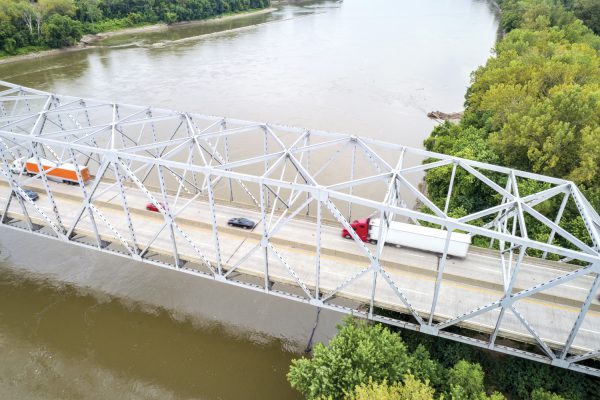Improving Road and Railway Safety

Freight trains and trucks crisscrossing the Plains are a familiar sight. Less visible is what’s inside — some of that freight is hazardous. With shipping expected to increase nearly 50 percent by 2040, improving rail and truck transportation safety is critical.
Hazardous material transportation is just one focus of a five-year, multiinstitutional program Nebraska is leading to improve transportation safety regionally and nationally.
The Mid-America Transportation Center, a consortium of academic institutions in Nebraska, Iowa, Missouri and Kansas, received $13 million from the U.S. Department of Transportation to develop tools and methods addressing a wide range of safety priorities, particularly in rural and underserved areas.
“The center isn’t just about conducting cutting-edge safety research, it’s also about implementing it,” said center director Laurence Rilett, Keith W. Klaasmeyer Chair in Engineering. “Our goal is to have a suite of products that promote safety and lead to measurable safety improvements.”
The program focuses on both preventing accidents and mitigating problems after accidents or natural disasters. For example, researchers are developing methods to monitor railroad and truck operators’ health and attentiveness in real time. They’re also developing crash barriers able to withstand freight trucks and prevent the turnovers that release material.
“The center isn’t just about conducting cutting-edge safety research, it’s also about implementing it.”
Flooding, another major regional issue, can scour out bridge foundations, causing collapses. Researchers are creating tools to identify and monitor vulnerable bridges and also to provide real-time diagnostics of a bridge’s condition following a flood.
Rural and tribal communities with limited resources are at particular risk from human-caused and natural disasters. The center is collaborating with these communities to develop disaster relief protocols and other strategies to improve their emergency response.
Other projects include communication tools to alert authorities when accidents occur, devices that monitor and relay workers’ hazardous material exposure to local medical facilities, and better bridge design guidelines.


These complex projects require multidisciplinary approaches. Over 40 researchers from five colleges are partnering with consortium colleagues. Partnerships also encompass numerous private- and public-sector entities, including the Nebraska Department of Transportation.
MATC, which serves as the Region 7 University Transportation Center, is one of 32 university transportation centers funded through the Fixing America’s Surface Transportation Act.